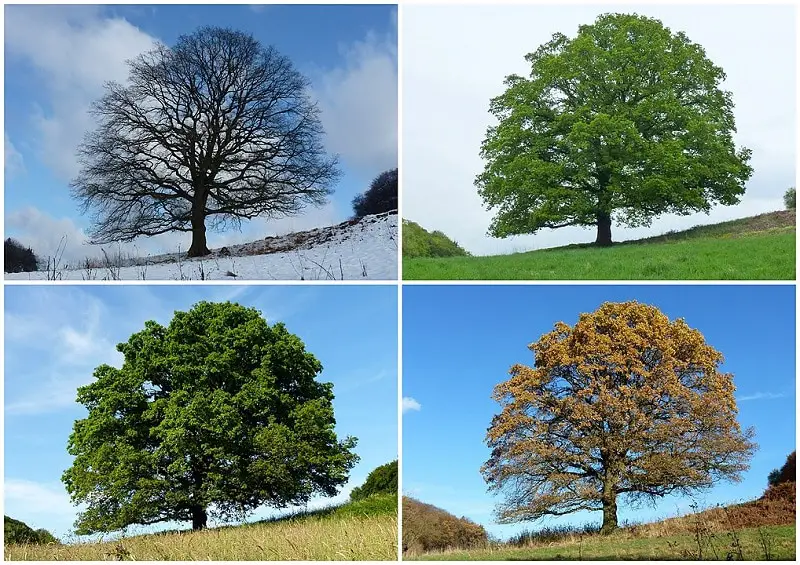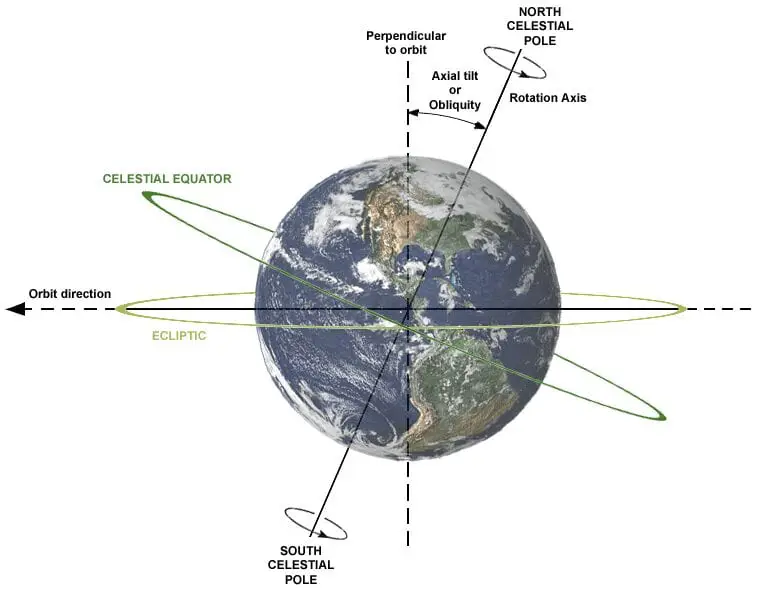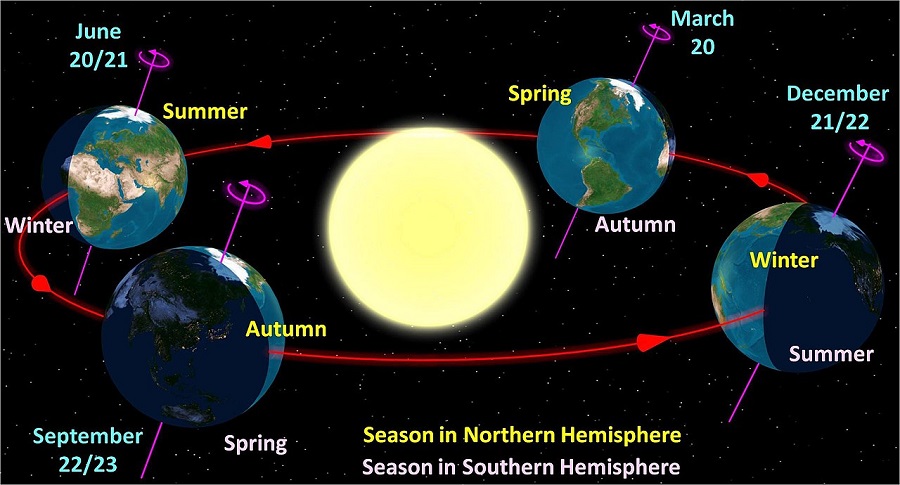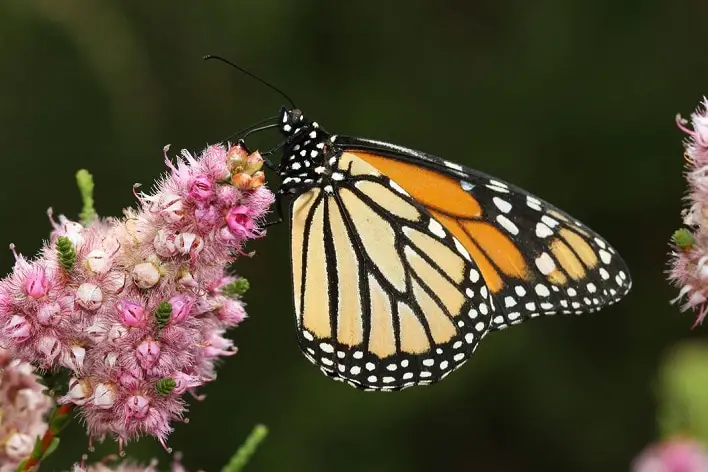September Equinox marks the arrival of the first day of spring in the southern hemisphere. That’s why in the earth’s southern areas, the September Equinox is known as the Spring Equinox. In 2023, the official first day of spring in Australia (southern hemisphere) will occur on Saturday, September 23, at sharp 16:50 Australian Eastern Standard Time (AEST).
On the other hand, for the people living in the northern hemisphere, this Equinox marks the arrival of the official first day of fall in the northern hemisphere. In other words, the meaning of the Equinox changes depending on the fact that at which side of the earth you live.
Regardless of the fact whether you are living in Newyork (northern hemisphere) or Sydney (southern hemisphere), the length of the day and night are almost exactly equal on the eve of the Equinox. CONFUSED?? Don’t worry, we will talk about it in a later section.
Moving ahead, in this article, we will talk about some of the exclusive facts like why there is a mismatch between the north and south equinoxes. Or, the first day of spring in the southern hemisphere is actually the official first day of spring or not? Therefore, I would suggest you stick with me till the end. Let’s dive right in!!!
Editor’s Choice: Full Worm Moon – Last full moon before Spring in Australia
What is Equinox?
There are two ways to define the meaning of equinox. These are astronomical and meteorological definitions of Equinox. Right now, I am going to explain it on the basis of astronomy. That doesn’t mean I won’t be explaining the meteorological definition of equinoxes. We will talk about it in a later section.
So, moving ahead, according to astronomy, this is a naturally occurring event during which the center of the sun appears to cross over the celestial equatorial line of the earth. In layman, one can say that an equinox occurs when the sun switches sides from one hemisphere of the earth to the other.
Not to mention, there are two types of equinoxes. The fall equinox, also known as the autumnal equinox marks the first day of fall. And, the Spring Equinox, also known as the Vernal equinox marks the first day of spring.
Highly Recommended: Equinox vs Solstice – What’s the Difference?
Four Seasons

In case you don’t know, there are generally four seasons that occur on earth. These are summer, winter, autumn, and spring. Just like the fall and spring equinox is responsible for the arrival of fall and spring seasons on earth.
In a similar way, the winter and summer solstice is responsible for the arrival of winter and summer seasons on earth. To summarise, each year earth experiences 2 solstices (summer and winter) and 2 equinoxes (spring and fall) that help us to understand the patterns related to the changing seasons.
Now, the question arises that why there is a mismatch between the south and north. To put it differently, why when there is a spring equinox in the southern hemisphere, there is a fall equinox in the northern hemisphere? Let’s find out!!!
Editor’s Choice: Seasons in Southern Hemisphere & its Bizarre Consequences
Thanks to Earth’s Tilt, We See Equinoxes

Well, there is a small correction here. Not only see equinoxes because of the earth’s tilt. We see solstices too. Moving ahead, just because the earth has an axial tilt of 23.4 degrees, there is a mismatch between the southern and northern hemispheres.
In fact, Kepler’s law also contributes to the formation of the different seasons across the globe. YES, YES, the same Kepler’s law that states that all the planets in the solar system revolve around the sun in an elliptical orbit.
However, Kepler’s law contribution can’t be compared to the role played by the earth’s tilt. I mean, if I say in terms of approximated ratios. Then it will be like 90:10.
| Basis of Comparision | Southern Hemisphere | Northern Hemisphere |
| March Equinox | In the southern hemisphere, it marks the first day of fall, therefore, Fall or Autumn Equinox. | In the northern hemisphere, it marks the first day of spring, therefore, Spring or Vernal Equinox. |
| June Solstice | It marks the first day of winter, therefore, Winter Solstice. | It marks the first day of summer, therefore, Summer Solstice. |
| September Equinox | Marks the first day of spring, therefore, Spring Equinox. | Marks the first day of fall, therefore, Fall Equinox. |
| December Solstice | It marks the first day of summer, therefore, Summer Solstice. | It marks the first day of winter, therefore, Winter Solstice. |
September Equinox – First Day of Spring in Southern Hemisphere

As you already know that an equinox occurs when the center of the sun appears to cross over the celestial equatorial line of the earth. Moreover, you also know that there are two types of Equinox. These are the march equinox and September equinox.
Editor’s Choice: What are Lines of latitude? Definition & Diagrams
So, how to define March Equinox or September equinox? OKAY, let me rephrase my question for you!!! What’s the difference between the march and September equinox? Any Guess???
Well, the primary difference between the March and September equinox is that during the March equinox, the sun switches sides from the southern hemisphere to the northern hemisphere of the earth. That’s why the March Equinox is also known as the Northward Equinox.
On the other hand, during the September Equinox, the sun switches sides from the northern hemisphere to the southern hemisphere of the earth. That’s why the September equinox is also known as the Southward Equinox.
September Equinox – Southward Equinox

Moving ahead, as the sun crosses over the imaginary celestial line from the north to the south direction. The earth’s southern areas start to warm up rapidly. Refer to the above image for a proper understanding.
Hence, marking the end of the winter and the arrival of the first day of spring in the southern hemisphere. That’s why the September Equinox aka Southward Equinox is officially known as the Vernal or Spring Equinox in the southern hemisphere.
Equal Day and Night

Yup, you heard me right. We have equal days and nights during September Equinox (also during March Equinox). WHY? Because when the sun crosses over the imaginary celestial line, the earth’s tilt becomes perpendicular to the sunshine. Or, you can say that on the eve of an equinox, the earth’s axis is neither tilted toward nor away from the sun.
Hence, daylight and nighttime hours are equal. In other words, we will have equal day and night i.e 12 hours. Don’t think that the earth’s axial tilt will become Zero during the equinoxes. In fact, it happens because of the sun’s passing over the Equatorial line.
Moving ahead, in the light of equal day and night phenomena, I just want to clarify that it’s not exactly equal. It’s nearly equal to 12 hours. Therefore, just for approximation, we simply say that during the vernal equinox and autumnal equinox, the length of day and night becomes equal.
Longer Days and Shorter Nights in Southern Hemisphere

There are two ways to practically observe the first day of Spring. First, you will feel that the weather starts to turn warmer, trees begin to grow their leaves, plants start to flower, etc. Second, You can notice that the days are getting longer and the nights are getting shorter.
In other words, after September Equinox, the sun will start to move southward. Therefore, in the southern hemisphere, the days will become longer and longer with each passing day. In fact, this process of longer days and shorter nights will go on until the arrival of the December solstice.
Spring Equinox – First Day of Spring or Mid-spring?
Now is the time that we should talk about the meteorological definition of the spring equinox. Well, technically speaking, if we go by the meteorological definition of the spring equinox, it marks the end of half of the vernal or spring season i.e mid-spring.
However, on the other hand, if we go by the astronomical definition of the Spring Equinox, it marks the arrival of the spring season. Therefore, the question arises that why we have two different definitions for a single event. More importantly, which one of these is the correct one? Let’s find out.
Let’s Go Back in Time
Before the arrival of the scientific revolution, humans didn’t know how to calculate the change in the season in terms of astronomical calculations. WHY? Because they didn’t have the telescope to do such nasty observations.
Therefore, what they used to do is to calculate the change in season as humanly as possible. With time, early humans understood that the sun seems to cross over the horizon after a fixed interval of time. Additionally, they also understood the pattern of the annual temperature cycle.
In other words, what early humans used to do is to calculate the relative things, like what they felt and observed with the naked eye, which is in fact in the modern notation is known as the meteorological definition of Spring Equinox or simply Meteorological Spring.
On the other hand, what our astronomers and scientists calculate with their super-sophisticated technology is defined as the astronomical definition of Spring Equinox or simply Astronomical Spring.
Therefore, to conclude, I would say that both definitions are correct in their own sense. Hence, as a result, some people define the Spring Equinox in the southern hemisphere as the first day of the spring season.
On the contrary, some people define it as the end of the half of the vernal or spring season, hence mid-spring. Not to mention, the meteorological seasons always arrive approx 20 days before the arrival of astronomical seasons. To understand it more clearly, refer to the below table.
Meteorological vs Astronomical Seasons
| Seasons | Meteorological Season Dates | Astronimocal Season Dates |
| Fall Equinox | Wednesday, 1 March 2023 | Tuesday, 21 March 2023 |
| Winter Solstice | Thursday, 1 June 2023 | Thursday, 22 June 2023 |
| Spring Equinox | Friday, 1 September 2023 | Saturday, 23 September 2023 |
| Summer Solstice | Friday, 1 December 2023 | Friday, 22 December 2023 |
When is the First Day of Spring 2023 in the Southern Hemisphere?
This year’s September Equinox i.e the Spring equinox in Australia (southern hemisphere) will happen on Saturday, September 23, at a sharp 16:50 Australian Eastern Standard Time (AEST). Not to mention, this astronomical event will occur at the same moment for all of us.
I mean, whether you are living in New Zealand, or, in Australia, or in Newyork (i.e in the northern hemisphere), it would be a moment of joy for all of us at the same instant. Well, yeah, for Americans, it will be the Fall or Autumnal Equinox. I hope you know the exact reason behind it.
Editor’s Choice: Seasons in Northern Hemisphere & its Bizarre Consequences
That’s it for this post. If you like this article, share it if you like, like it if you share it. You can also find us on Mix, Twitter, Pinterest, and Facebook. Hey man, If you have come this far, do give us feedback in the comment section. It would make my day. You can also make a donation. Your donations will help us to run our website and serve you BETTER. Cheers!!!
You might also like:
- March Equinox 2023 – First Day of Spring in Northern Hemisphere
- March Equinox 2023 – First Day of Fall in Southern Hemisphere
- June Solstice 2023 – First Day of Summer in Northern Hemisphere
- June Solstice 2023 – First Day of Winter in Southern Hemisphere
- December Solstice 2023 – First Day of Winter in Northern Hemisphere
- December Solstice 2023 – First Day of Summer in Southern Hemisphere

Very thorough explanation of the equinoxes and the seasons.
I left the city and came onto a small farm right about the Autumn equinox, 2015, so the equinoxes are a kind of mile-post keeping track of the years we’ve been here. Also, being on a farm it is easier to observe the seasons as they change and the celestial objects. I like to take simple observations, such as the zenith angle of the sun on the equinox and solstice using a shadow length and trigonometry, such as the ancient Greeks used to calculate the radius of the earth.
I wonder how the plants, such as daffodils, know when to flower, or the deciduous trees know when to put forth their new leaves?
Hello Paul,
I totally agree with your point of view. Happy to know that you liked my content. Keep visiting us!!!
Thanks Atul 😁.
Paul: I believe the ground temperature is partly a trigger for daffodils and other flowering plants to flower. And of course increased levels of UV infrared and other forms of solar generated light can trigger off lots of plant related activity including the generation of new leaves and growth in deciduous trees..and vice versa. 😁
Thank you, Atul, for a very clear explanation. I finally understand the difference between the astronomical and meteorological equinoxes and solstices, which is something that has puzzled me for years. I’ll be back – before the solstice. Best regards, and keep up the good work.
Thank you, Terry, Keep visiting us!!!
In Australia, we use the meteorological definitions of the seasons – no one refers to the spring equinox as the start of spring, because spring begins on the 1st of September; similarly, summer begins on the 1st of December, autumn on the 1st of March, and winter on the 1st of June. If you consult news articles and so forth you will find that the meteorological definitions of the seasons are the ones that are always used in popular culture, whilst the astronomical definitions are never used.
They say if you fully understand a fact or something, you should be abel to explain it to a 6yr old. Before reading your article Icould not explain it so well, so thank you!!!
Welcome Carolyn, Keep visiting us!!!
Hi, I would like to know why in Australia the seasons change on the 1st of the month, ie 1st September is 1st day of spring? 1st of December is 1st day of summer? Rather than by the solstice or equinoxe.as it is with other countries?
Hey Anonymous,
Well, technically speaking, as per astronomical definition, spring starts on spring equinox i.e 22/23 September. On the other hand, as per meteorological definition, spring starts on 1 September. Most people on earth observe the arrival of spring on spring equinox day. However, there are some places in this world (especially southern hemisphere countries such as Australia or South Africa) where people observe the arrival of spring on September 1. I am hoping that it would clear your question. Otherwise, if there is more, do let me know. I am there for you guys. Keep visiting us!!!
In all the countries I have lived, the only one where new seasons start on the solstices and equinoxes is the USA. In most southern hemisphere countries, spring begins September 1, summer December 1st, autumn March 1, and winter June 1, and in most northern hemisphere countries, autumn begins September 1, winter December 1, spring March 1 and summer June 1.
Hello Megs,
I totally agree with your point of view. I would simply say that it’s just the way that how we approach certain things. That is why some observe the arrival of spring of 1 September and some on spring equinox i.e on 22/23 September.
Hi Atul
Thank you for the article. In your research on astronomical seasons did you ever see any reason why Astronomical Summer was defined to start at the solstice rather than being centred on the solstice? Astronomers, being interested in dark skies, would know that the 3 months of the year with shortest (or longest) night-time hours would be centred on the solstice. In the same way that Astronomical Twilights are centred on local midnight. I can see why meteorologists would choose seasons to fit within whole months for convenience of data gathering and reporting. The three months chosen for each season in the temperate parts of the world conveniently fit, roughly, our experience of daylight, temperature and our observations of changes in flora and fauna. I suppose it can only fit roughly because many of those seasonal attributes change from place to place, depending on geography and climate. Thanks again. Cheers. Malcolm
Thank you for clearing that for me….I wish I had taken more notice when I was in Equador.
Hi
In Australia the official first day of Spring is 1st of September, the official first day of Summer is the 1st of December, the official first day of Autumn is the1st of March, and the official first day of Winter is the 1st of June. The dates of the solstices and equinoxes are irrelevant to many Australians, and generally only those who do a google around that time of year get the actual date right. We are pretty laid back, and found it so much simpler and easier to remember when each season is supposed to be starting by just tying it to the start of a month. We also love Summer and so declare it as starting on the 1st of December instead on the Summer Solstice so we can get a few weeks Summer holiday party time in before hitting Christmas Day.
The whole concept of four seasons breaks down in many areas of Australia with anywhere between just two seasons recognised in some areas, a wet ‘monsoon season’ during summer and ‘dry season’ the rest of the year, to over seven distinct seasons recognised by some indigenous groups and increasingly the general population in some areas of the Northern Territory and Darwin.
Tasmania where I grew up is the most southern state and fits closest to the Eurocentric view of having four seasons – Summer, Autumn, Winter, and Spring. Tassie has been compared as being the area of Australia most like England in climate and what vegetation will grow and for decades was known as ‘the apple isle’ due to its thriving apple export industry. Though even in areas that once had four fairly distinct European type seasons due to climate-change enhanced extreme weather events it increasingly seems to be reducing to just two: bush fire season and flood season.
The equinoxes and solstices are increasingly being celebrated in Australia with some drawing on Celtic and other European pagan ancestry and seeing them as alternatives to the official seasonal celebration days I noted above, for example seeing Summer Solstice celebrations as an alternative to celebrating Christmas. For many mainstream Australians though the Spring Equinox will pass unnoticed, as does the Autumn Equinox and the Winter and Sumer Solstices, and to them the first day of Spring was the first day of September. I’m over 60 years old and live in Australia and can verify that’s how we have always marked the official start of the seasons. My grape vine put out new shoots on September 2nd, three weeks ago, which to me was a sign that winter was over and spring had begun.
The discussion about start of seasons is interesting.
Please note, however, trust in Australia seasons officially start on the 1st of the month, not the solstice or equinox. Spring officially begins on 1st September, the Spring equinox occurs DURING Spring.
Cheers
It was a great article.
Persians have been celebrating Spring equinox (21st Mar in northern hemisphere, also start of New Year in Iran) for at least 25 centuries as inscribed on ancient constructions in Iran like Persepolise.
Since moving to Australia, the Sep 23rd has always feels like New Year for me!